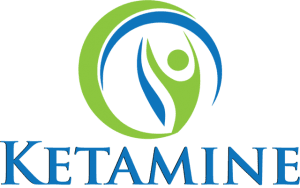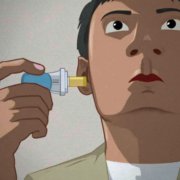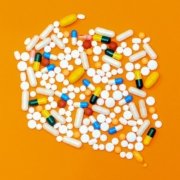Ketamine powder for depression is gaining attention as a potential breakthrough amid rising rates of depression. This increase in depression highlights the need for effective treatment options. The introduction of antidepressants like SSRIs revolutionized treatment, but many patients experience delayed results or lack of relief. Ketamine, with its fast-acting effects approved for anesthesia decades earlier, is emerging as a promising alternative for those with treatment-resistant depression.
- Fast-acting: Works quicker than traditional antidepressants.
- Alternative therapy: Offers hope for those not responding to SSRIs.
- Administered safely: Available in clinical settings.
As an expert in the landscape of ketamine powder for depression, I have studied its effects and potential in treating mental health disorders, guiding others through its benefits and challenges. Now, let’s dig into how ketamine interacts with brain circuits, laying the foundation for its antidepressant properties.

The Science Behind Ketamine
Ketamine powder for depression works by targeting the brain’s circuitry in a unique way. Unlike traditional antidepressants, which often focus on serotonin, ketamine acts on a different neurotransmitter system—glutamate. This difference might be why it helps people who haven’t found relief with other medications.
Brain Circuitry and Synapse Regrowth
When someone has depression, their brain’s circuitry can change, particularly in how neurons—tiny nerve cells—communicate. These changes can lead to a reduction in synapses, the connections between neurons. Synapses are essential for communication within the brain, and losing them can worsen depression.
Dr. John Krystal from Yale School of Medicine explains that ketamine seems to encourage the regrowth of these vital connections. Within just 24 hours of the first dose, patients can start regrowing synapses. This regrowth is crucial because it helps restore the brain’s ability to communicate effectively.
Neurotransmitters: The Role of Glutamate
Glutamate is a key neurotransmitter involved in mood regulation. In some people with depression, the brain’s glutamate receptors—like tiny catcher’s mitts for glutamate—become less responsive. It’s as if these receptors get worn out and can’t catch the glutamate anymore, leading to communication breakdowns in the brain.
Ketamine helps by replenishing these glutamate receptors, making them more effective. Think of it as providing new catcher’s mitts, so the brain can catch and use glutamate again. This process helps improve mood and can make other treatments more effective.
Opening a Window for Change
Experts like Dr. Gerard Sanacora from the Yale Depression Research Center suggest that ketamine might open a “critical period” where the brain becomes more adaptable. This adaptability means the brain can better respond to new experiences or therapies, like cognitive behavioral therapy (CBT).
In this window of plasticity, patients may find it easier to shift out of depression and adopt healthier thought patterns. This could explain why psychotherapy or medications that didn’t work before might become effective after ketamine treatment.
Ketamine Powder for Depression
Ketamine powder for depression is gaining attention for its rapid-acting effects, especially in cases of treatment-resistant depression. This is a condition where traditional antidepressants, like SSRIs, fail to provide relief.
Rapid-Acting Effects
One of the standout features of ketamine is its speed. Unlike SSRIs, which can take weeks to show results, ketamine can start working within hours. Dr. Gerard Sanacora from Yale highlights that ketamine’s effects on neuroplasticity are swift. This quick action is crucial for individuals in severe distress.
For many patients, the relief is like flipping a switch. They report feeling lighter, more optimistic, and capable of engaging in daily activities. This rapid response is particularly beneficial for those who have struggled for years without improvement.
Treatment-Resistant Depression
For individuals with treatment-resistant depression, ketamine offers a new hope. Traditional treatments often focus on serotonin, but ketamine targets glutamate. This different approach can make a significant difference for patients who haven’t responded to other medications.
In clinical settings, ketamine is often administered as part of a comprehensive treatment plan. This plan may include psychotherapy and other supportive therapies. The goal is to maximize the benefits of ketamine and help patients build resilience against future depressive episodes.
An Alternative to SSRIs
SSRIs, like fluoxetine, have been a mainstay in treating depression since the 1980s. However, their delayed onset and limited effectiveness for some individuals have left a gap in treatment options. Ketamine fills this gap by offering an alternative pathway to relief.
By acting on the brain’s glutamate system, ketamine provides a different mechanism of action. This difference is crucial for patients who have not found success with serotonin-based treatments. It opens up new possibilities for managing depression more effectively.
In summary, ketamine powder for depression represents a promising alternative for those who have not benefited from traditional antidepressants. Its rapid effects and unique mechanism make it a valuable tool in the fight against treatment-resistant depression.
In the next section, we’ll dig into the various methods of administering ketamine and their impact on treatment outcomes.

Methods of Administration
When it comes to administering ketamine for depression, there are several methods, each with its own unique benefits and considerations. The main forms are IV infusion and intranasal spray.
IV Infusion
IV infusion is one of the most common methods used in clinical settings. It involves delivering ketamine directly into the bloodstream through an intravenous drip. This method allows for precise control over the dosage and ensures that the drug is rapidly available to the brain.
Patients typically undergo a series of six infusions over a period of two to three weeks. Each session lasts about 40 minutes, during which patients are monitored by medical professionals. The quick onset of effects is one of the main advantages of IV infusion, making it ideal for individuals needing immediate relief from severe depression.

Intranasal Spray
The intranasal spray method offers a more convenient alternative to IV infusion. Patients self-administer the spray under the supervision of a healthcare provider in a certified clinic. This method is less invasive and can be more appealing to those who are uncomfortable with needles.
The nasal spray contains a derivative of ketamine, which has been approved by the FDA for treatment-resistant depression. It is typically used in conjunction with oral antidepressants, and patients are observed for at least two hours after administration to monitor for any side effects.
Comparing Methods
Choosing between these methods depends on several factors, including patient preference, accessibility, and the severity of symptoms. While IV infusion offers rapid relief and precise dosing, the intranasal spray provides convenience and ease of use.
In the next section, we’ll compare the different forms of ketamine, including IV and nasal spray, and discuss their relative potency and patient preferences.
Comparing Ketamine Forms
When considering ketamine powder for depression, understand the differences between the forms it comes in. Each method of administration has its own advantages and is suited to different patient needs.
IV vs Nasal Spray
IV infusion and nasal spray are the two primary methods of administering ketamine for depression. Each has its own set of benefits:
- IV Infusion: This method is known for its quick onset of effects. Patients receive ketamine directly into their bloodstream, which allows for precise control over the dosage. The effects are generally felt within minutes, making it a preferred option for those needing rapid relief.
- Nasal Spray: The intranasal spray, particularly the FDA-approved esketamine (Spravato), offers a more user-friendly approach. Patients can self-administer the spray under medical supervision, which is less invasive than an IV. This method is often chosen by those who prefer not to deal with needles.
Esketamine Potency
Esketamine is a refined version of ketamine, isolated to target specific symptoms more effectively. It is considered potent and fast-acting, showing significant results in clinical trials. For instance, studies conducted at institutions like U-M and Mayo Clinic have demonstrated esketamine’s efficacy in reducing depression scores rapidly. This makes it a strong contender for patients who haven’t responded to traditional treatments.
Patient Preferences
Patient preference plays a crucial role in selecting the appropriate form of ketamine treatment. Some patients prefer the quick relief offered by IV infusions, despite the need for needles and clinical visits. Others lean towards the convenience of the nasal spray, which can be administered with ease and offers a sense of autonomy.
Moreover, some patients report that the nasal spray feels more manageable due to its less intense onset compared to the rapid effects of IV infusion. However, both methods require supervision in a clinical setting to monitor potential side effects, such as dizziness or dissociation.
In the upcoming section, we’ll address frequently asked questions about ketamine powder for depression, including the number of treatments required and potential side effects.
Frequently Asked Questions about Ketamine Powder for Depression
How many ketamine treatments are needed?
The number of ketamine treatment sessions can vary. Typically, patients start with a series of six infusions over two to three weeks. This intensive phase is designed to quickly reduce symptoms of depression. After the initial series, maintenance sessions might be scheduled less frequently, based on individual needs and remission rates.
Remission rates can be promising for those with treatment-resistant depression. Some patients experience relief after just one session, while others may require the full series to see significant improvement.
What are the side effects of ketamine therapy?
Ketamine therapy is not without side effects. During treatment, some patients report experiencing dissociation, a feeling of being detached from reality. This can be unsettling but is generally temporary.
Blood pressure may increase during or shortly after treatment, so monitoring is necessary. Other common side effects include nausea, dizziness, and mild sedation. These effects typically subside shortly after the session.
Does ketamine therapy get you high?
While ketamine is known for its hallucinogenic properties when used recreationally, the doses used in depression treatment are carefully controlled. Patients might experience some hallucinogenic effects during treatment, such as altered perceptions or vivid imagery. However, these are closely monitored by healthcare professionals to ensure safety.
The therapeutic use of ketamine is distinct from recreational use. The goal in a clinical setting is to alleviate symptoms of depression, not to induce a high.
Understanding these aspects can help patients make informed decisions about using ketamine powder for depression as part of their treatment plan.
Conclusion
Ketamine powder has emerged as a promising treatment for depression, especially for those who haven’t found relief with traditional methods. Its rapid-acting effects make it a valuable option for patients with treatment-resistant depression. Unlike SSRIs, which can take weeks to show results, ketamine can provide relief within hours, offering a new lease on life for many.
A comprehensive treatment plan is essential for maximizing the benefits of ketamine therapy. It’s not just about the medication; ongoing support and integration of therapy are crucial. Patients are encouraged to continue with psychotherapy and maintain open communication with healthcare providers. This holistic approach ensures that the treatment is not just a quick fix but a part of a sustainable mental health strategy.
For those considering ketamine powder as a treatment option, it’s important to source it responsibly. At Buy Ketamine Crystals Online, we offer high-quality ketamine products with discreet delivery options. Our commitment to safety and quality ensures that you receive the best possible product for your needs.
In conclusion, ketamine powder presents a significant potential in the fight against depression. With careful planning and professional guidance, it can be a powerful tool in a comprehensive treatment plan. If you’re considering ketamine therapy, consult with your healthcare provider to determine if it’s the right choice for you.











